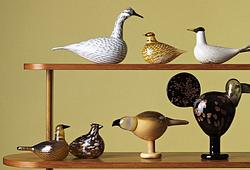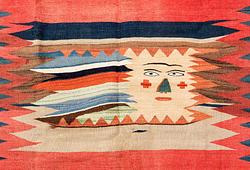Akseli Gallen-Kallela
AKSELI GALLEN-KALLELA, SHEPHERD BOY FROM PAANAJÄRVI.
Sign 1917. With dedication. Oil on canvas 35x25 cm.
Exhibitions
Gallen-Kallela Museum 2.6-9.9 2012 & 13.9 2008-25.1 2009; Halosenniemi 10.2-24.5 2015, Salo Art museum 12.10 2013-5.1 2014.
More information
Akseli Gallen-Kallela, Shepherd boy from Paanajärvi, 1917, oil on canvas, 35x25 cm.
Shepherd boy from Paanajärvi is one of Akseli Gallen-Kallela's most famous and most loved themes. The version now on sale was the second edition painted by Gallen-Kallela himself of the well-known work from 1892. This variant may have originated at the same time as the premiere edition, but was further refined in Ruovesi at the turn of the century with the finishing touches only added by the artist in 1917. It is painted in a firm, direct style that contrasts with the meticulous attention to detail that characterises the premiere painting.
Gallen-Kallela gave this version of Shepherd boy from Paanajarvi to the shop manager Onni Luutonen as a gift in recognition of services and as a memento of their friendship. The Gallen-Kallela family lived from 1894 right up to the turn of the century in Ruovesi at the Kalela wilderness studio personally designed by the artist, returning to it again from the Tarvaspää studio castle in 1915 to escape the tribulations of the First World War. With his local shop only just over a mile away in Ruhala, Luutonen often came to Kalela for fireside discussions of backwoods philosophy and reflections on current affairs.
The shepherd boy theme dated back to time spent in 1892 at Paanajärvi in Kuusamo. Axel and Mary Gallén spent this year both in urban and wilderness surroundings. Their first foreign trip together had taken them to Paris, and proved a challenging time for Gallen-Kallela’s stylistic ideas. Seemingly disappointed with the latest artistic trends in the city where he had studied, Gallen-Kallela then withdrew to the poor fringes of his native land in search of the original unsullied culture that was typical of the era. The Gallen-Kallela family made the journey from Oulu to Kuusamo on horseback, by boat and on foot, crossing the wetlands “over the slimy logs”. Axel and Mary Gallén and their one year-old daughter lived at the Rajala settlement in Paanajärvi from July to October, but returned to the south as the weather turned colder and with food supplies running low.
Besides Shepherd boy from Paanajarvi, this time at Paanajärvi saw starts made on The Great Black Woodpecker and Mäntykoski Waterfall. All of these paintings allude powerfully to the world of sound. The roar of white water, the echo of the birch bark horn and the drumming of the black woodpecker are the response of the wilderness to cosmopolitan attempts to transcend the boundaries of art. Gallen-Kallela’s interest in folk religion was growing stronger at this time, reflecting a more general European revival of interest in mythology and ancient religions, and the Paanajärvi works may also disclose ideas of various dimensions of reality and of nature spirits. This is evident in the orientation of Gallen-Kallela’s art towards symbolism, despite the negative views on this subject that the artist expressed at the time.
Life in the wilderness was a challenge for the people of Paanajärvi, even as the location spoiled them with beautiful scenery and the occasional summer heatwave. The region was blighted by crop failures and frost, with snow still on the ground in July of 1892 and spring sowing delayed until August. The Gallen-Kallelas fished and hunted, and picked berries and mushrooms. People visited the prosperous Rajala settlement asking for flour for ersatz bread supplement. Bears worried the livestock, with one even mauling a neighbouring farmer before it was killed for food. The master of the Rajala settlement later wrote to Gallen-Kallela reporting how a bear had eaten their reindeer again. The model for the Shepherd boy from Paanajarvi painting was the neighbour’s 16 year-old son, who had brought the bear down with a single round from his flintlock rifle.
Minna Turtiainen
This item should be collected at Iso Roobertinkatu 12 after the auction has ended.
Artist
Akseli Gallen-Kallela is counted among Finland's most famous artists, born in 1865 in Pori. He studied at the Drawing School of the Finnish Art Society in Helsinki and later at the Académie Julian in Paris. He worked across various art forms such as painting, graphics, illustrations, textiles, architecture, and even designed military uniforms. Akseli Gallen-Kallela's first significant work, 'Old Woman with a Cat,' challenged the ideals of its time and paved the way for realism in Finnish painting.
Gallen-Kallela was primarily known for his paintings and illustrations for the Finnish national epic, 'Kalevala.' In 1900, he executed dome paintings with Kalevala motifs for the Finnish pavilion at the World Exhibition in Paris. His visual language is often described as naturalistic, symbolic, and expressionistic
Read more



































